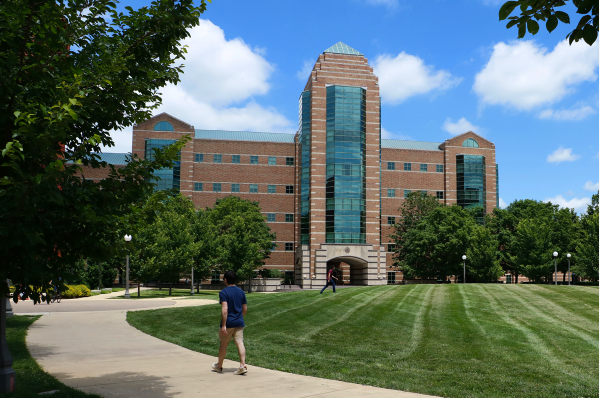MRI-Based Imaging Tool to Help Researchers Study the Brain During Swallowing
Images

Researchers at the Beckman Institute for Advanced Science and Technology, Carle Hospital, and Purdue University teamed up to develop a new imaging tool that will improve our understanding of how the brain controls swallowing in both healthy patients and those experiencing a swallowing-related disorder. Their work will be funded by a five-year grant expected to total $2.8 million from the National Institute on Aging of the National Institutes of Health.
Safe and efficient swallowing is a critical function of human life. Swallowing disorders — known by the medical term dysphagia — can be caused by diseases like stroke, cerebral palsy, and Parkinson’s disease that affect the nerves and muscles surrounding the head and neck. If someone’s ability to swallow is impaired, they may be at risk of life-threatening conditions.
In this study, the researchers will use an MRI-based imaging tool called SimulScan to study how the brain’s switchboard of neural pathways controls the muscles needed for swallowing. SimulScan, named for its ability to simultaneously visualize brain activity and muscle activity, allows the researchers to trace the links between brain activity and muscular movement as a patient swallows. It determines which moments of brain activation are linked to the moments of mechanical movement.
The researchers will use SimulScan technology to visualize swallowing in healthy participants as well as participants whose swallowing is disordered. In both cases, the researchers will also work with participants of various ages, to investigate how swallowing behaviors change across the lifespan.
Ultimately, SimulScan will help clinicians more accurately diagnose disordered swallowing and design personal — and thus, more effective — treatments for patients with dysphagia.
“We have been working on this tool for a long time,” said Brad Sutton, a professor of bioengineering at the University of Illinois Urbana-Champaign and the technical director of Beckman’s Biomedical Imaging Center. “It brings together technology that we have been developing in MRI image acquisition and dynamic image reconstruction over the past 10 years.”
Sutton, the study’s principal investigator at UIUC, will collaborate with electrical and computer engineering professor Zhi-Pei Liang to develop fast MRI technology that can image a moving subject in real time. To complement this technical expertise, joint-PI Georgia Malandraki will contribute her expertise in the science of swallowing.
Malandraki, a professor in the Department of Speech, Language, and Hearing Sciences at Purdue University, received her Ph.D. from UIUC in the Department of Speech and Hearing Sciences. Her work was the driving force for the need for technological innovations to image age-related changes in brain activations during swallowing, Sutton said.
Sutton first patented the SimulScan technique in 2010. In 2011, Malandraki, Sutton, and then-graduate students Thomas Paine and Charles Conway published the SimulScan technique in the journal Magnetic Resonance in Medicine. Over the next dozen years, Sutton and Liang continued to improve the resolution and quality of moving MRI footage of speech and swallowing. At the same time, Malandraki established her lab at Purdue University, where she used imaging techniques like MRI to study the physiology of swallowing, especially among clinical populations affected by stroke and Parkinson’s disease.
“When we finally had the dynamic imaging technology producing high-quality images of speech and swallowing, I knew it was time to reconnect with Georgia,” Sutton said. “It is exciting to be able to finally advance this technology, use it to extract understanding of the swallowing process, and translate it into clinical impact.”